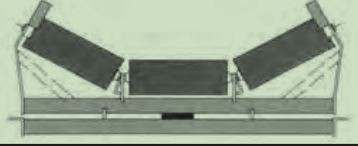 Afrikaans
Afrikaans  Albanian
Albanian  Amharic
Amharic  Arabic
Arabic  Armenian
Armenian  Azerbaijani
Azerbaijani  Basque
Basque  Belarusian
Belarusian  Bengali
Bengali  Bosnian
Bosnian  Bulgarian
Bulgarian  Catalan
Catalan  Cebuano
Cebuano  Corsican
Corsican  Croatian
Croatian  Czech
Czech  Danish
Danish  Dutch
Dutch  English
English  Esperanto
Esperanto  Estonian
Estonian  Finnish
Finnish  French
French  Frisian
Frisian  Galician
Galician  Georgian
Georgian  German
German  Greek
Greek  Gujarati
Gujarati  Haitian Creole
Haitian Creole  hausa
hausa  hawaiian
hawaiian  Hebrew
Hebrew  Hindi
Hindi  Miao
Miao  Hungarian
Hungarian  Icelandic
Icelandic  igbo
igbo  Indonesian
Indonesian  irish
irish  Italian
Italian  Japanese
Japanese  Javanese
Javanese  Kannada
Kannada  kazakh
kazakh  Khmer
Khmer  Rwandese
Rwandese  Korean
Korean  Kurdish
Kurdish  Kyrgyz
Kyrgyz  Lao
Lao  Latin
Latin  Latvian
Latvian  Lithuanian
Lithuanian  Luxembourgish
Luxembourgish  Macedonian
Macedonian  Malgashi
Malgashi  Malay
Malay  Malayalam
Malayalam  Maltese
Maltese  Maori
Maori  Marathi
Marathi  Mongolian
Mongolian  Myanmar
Myanmar  Nepali
Nepali  Norwegian
Norwegian  Norwegian
Norwegian  Occitan
Occitan  Pashto
Pashto  Persian
Persian  Polish
Polish  Portuguese
Portuguese  Punjabi
Punjabi  Romanian
Romanian  Russian
Russian  Samoan
Samoan  Scottish Gaelic
Scottish Gaelic  Serbian
Serbian  Sesotho
Sesotho  Shona
Shona  Sindhi
Sindhi  Sinhala
Sinhala  Slovak
Slovak  Slovenian
Slovenian  Somali
Somali  Spanish
Spanish  Sundanese
Sundanese  Swahili
Swahili  Swedish
Swedish  Tagalog
Tagalog  Tajik
Tajik  Tamil
Tamil  Tatar
Tatar  Telugu
Telugu  Thai
Thai  Turkish
Turkish  Turkmen
Turkmen  Ukrainian
Ukrainian  Urdu
Urdu  Uighur
Uighur  Uzbek
Uzbek  Vietnamese
Vietnamese  Welsh
Welsh  Bantu
Bantu  Yiddish
Yiddish  Yoruba
Yoruba  Zulu
Zulu Tail Pulley Solutions for Efficient Conveyor Systems
Tail Pulley A Vital Component in Conveyor Systems
In the world of material handling and transportation, conveyor systems play a pivotal role in ensuring efficient and smooth operations. Among the various components that make up these systems, the tail pulley is an essential element often overlooked yet crucial in maintaining the overall functionality and performance of the conveyor belt.
The tail pulley is typically located at the end of a conveyor system and serves multiple purposes. It acts as a directional guide for the conveyor belt, ensuring proper alignment and reducing the risk of belt misalignment. When a conveyor system is in operation, the movement of the belt creates tension that needs to be correctly managed. The tail pulley helps in this regard by providing the necessary support to maintain the tension of the belt, which is vital for its effective operation. Proper tension ensures that the belt does not slip off the pulleys or suffer from excessive wear, which can lead to costly downtimes and repairs.
Moreover, the tail pulley is equipped with a drum where the conveyor belt wraps around. This design allows the pulley to drive the belt as it rotates, facilitating the transportation of materials from one point to another. Depending on the specific application and the type of materials being conveyed, tail pulleys can come in various sizes and designs. They may be fabricated using different materials, including steel, rubber, or plastic, each selected based on the environmental conditions and the nature of the materials being handled. For instance, a tail pulley used in a high-temperature environment might need to be made from heat-resistant materials to ensure durability and longevity.
tail pulley

An important aspect of the tail pulley is its end user maintenance and care. Regular inspection and maintenance are crucial to prevent potential failures that could disrupt operations. Maintenance tasks might include checking for wear and tear, ensuring proper alignment, and lubricating bearings to minimize friction. Neglecting these tasks can lead to serious issues, including belt slippage, which not only affects productivity but can also pose safety risks in the workplace.
Additionally, advancements in technology have introduced various innovations in tail pulley design and functionality. For example, tail pulleys with built-in sensors can monitor tension levels and provide real-time data to operators, helping them to proactively manage and maintain their conveyor systems. This technological integration has made it easier to optimize performance and reduce the risk of unexpected downtimes, leading to more efficient processes.
In conclusion, the tail pulley, while often underestimated, is a key component in the smooth operation of conveyor systems. It not only aids in belt alignment and tension management but also directly influences the overall efficiency and reliability of material handling operations. By understanding the importance of the tail pulley and committing to regular maintenance, businesses can enhance the performance of their conveyor systems, ensuring seamless operations and minimizing costly disruptions. As industries continue to evolve, the role of the tail pulley will remain fundamental in driving productivity and efficiency in material handling processes.
-
Wing Pulley Conveyor for Conveyor Belt MaintenanceNewsJun.16,2025
-
Self Cleaning Spiral Idler for Conveyor DesignNewsJun.16,2025
-
Pulley Lagging for Conveyor Belt AlignmentNewsJun.16,2025
-
Impact Idlers Used in Belt Conveyor for PerformanceNewsJun.16,2025
-
Ceramic Lagging Conveyor Pulley for Conveyor Belt SystemsNewsJun.16,2025
-
Belt Conveyor Idler for Heavy-Duty ApplicationsNewsJun.16,2025





























